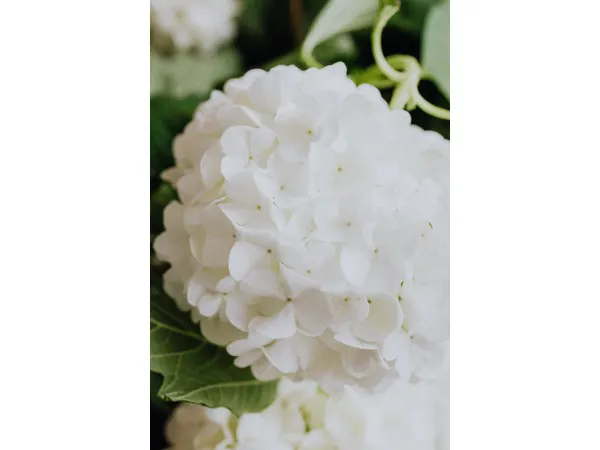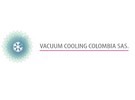'The floral industry has proven to be resilient.' This phrase has been used multiple times over the last two years, but what does it mean? When it means going back to the past, it is not always better, explains Mauricio Gleiser of Vacuum Cooling Colombia. In this article, he looks at the 10 global consumer trends and how they apply to the floral industry and explains why the industry should not go back to its previous habits.
Going back to previous habits? Top ten consumer trends
Fortunately, the pandemic resulted in increased demand and appreciation for flowers like never before, for their own consumption and not related to the typical holiday-only habits. But will this demand continue, or will resilience take us back to the previous habits?
Reflecting on the past years and speculating about the future for the floriculture industry, Gleiser analyzes and highlights several trends out of the “Top Ten Global Trends for 2022” presented by Angus Alison, Head of Lifestyle for Euromonitor International, in the IFPA Virtual Town hall. According to Gleiser, the findings in the report are extremely valuable and fully applicable to what the floral industry is experiencing.
“During the pandemic, many growers had to deal with logistical challenges. These logistic issues regarding lack of airfreight capacity forced growers and exporters to look for alternatives and become more interested and open to change, innovation, and technology explains Gleiser. A new culture has been born and is depicted in Nº 1 top trend of Euromonitor as follows”:
1.The great life refresh:
“People have had so much time to rethink…and many made changes…- new priorities have led them to move... and so emerged consumers with a greater appreciation...prioritizing health and happiness…For businesses, it´s crucial to stay aware of what those changes are and what changes are influencing their purchase decisions? Awareness of that means it´s important to innovate to ensure the goods…really respond to these changes,” said Angus during the Virtual Town Hall.
The second trend Angus mentioned was:
2. The socialization paradox:
“There are different feelings about resurfacing from the pandemic—some are raring to go, and others are not comfortable with it at all… Business …need to adapt to the many ways they´re living: how and when and where are (consumers) socializing? We are seeing new social occasions…(and) consumers want to indulge in those, whether it´s at home or out of the house. Suppliers need to support retailers…providing a really strong customer experience wherever that may be, and they need to think about how to support all of this with…the goods themselves…” said Angus during the Town Hall.
When looking at this trend and applying it to the floral industry, Gleiser says: “The floral industry has experienced the positive feeling and must take advantage of it and do asap the changes to strongly satisfy this new consumer appetite.”
3. Self-love seekers:
“Consumers are embracing who they really are—prioritizing their own. For suppliers, it´s about ensuring that the customer gets …what the consumer wants. For business, investing in technology, sourcing (better logistic means), etc…” said Angus.
Applying this third trend to the floral industry, Gleiser says: “Most previous floral consumer research has indicated that consumers want longer vase life (at lower costs) on top of everything else but even willing to pay more if such is guaranteed. It is of utmost importance to deliver the best possible value while keeping costs low, both possible at the same time, just adopting the new technologies. These changes must be enforced especially on holidays , when the massive perception of consumers is at its peak.”
4 Financial aficionados:
“Consumers are getting much better at managing money...and they pay close attention to their everyday spending. An example was taken from a soda firm launching an affordable, but premium, soda. They saw they needed to help consumers buy better products with their money so that product has a more upmarket look…”,said Angus
“Higher-certifiable- value at consumers hands can generate Premium products in a consistent manner, that consumers shall notice”, says Gleiser
7. Climate change:
“Undoubtedly climate change is influencing consumers today and climate changers are walking the talk, looking for energy efficient and sustainable products….Businesses are taking steps to reduce carbon footprints (and) they can help consumers make informed choices, more transparent. You may be doing a lot to be more sustainable but do your customers know this?” Asked Angus.
Gleiser: “Prevailing logistics are 50+ years old. New models based on available technologies can reduce carbon footprint by 90+% , increase all operational efficiencies and reduce energy consumption in a more sustainable way.”
So why quality goes down on holidays?
"During holidays, daily volumes usually triple in just 15 days”, says Gleiser. “. All the infrastructure (coolers, fleets, warehouses ,etc) is taken beyond its reasonable boundaries and limited by scarce time. Cold chain is severely affected, much more than the usual daily. To deal with this higher demand, much more people are needed, not only at farm level, but in all segments of the chain, from farm to retail level. As these people are needed for such a short time, they are often inexperienced and untrained, resulting in a lower quality product. Talent cannot be recruited nor kept at any level”
"All in all, holidays result in an expensive but lower-quality product for the consumer. In turn, after such repeated and not so good experience they never had the incentive to buy again.

Hydrangea after Vacuum Cooling - 15 days in transit - maritime shipment, increases vase life more than 15 days after arrival.
Improving value
Of course, the demand in the run-up to holidays will remain, but in order to continue supplying a good quality product year round, Gleiser urges growers as well as retailers to look at the supply chain and in particular to the cold chain. "Currently, there is a lack of integral cold chain. The industry needs to invest more in technology and innovations, to enable the product to arrive in the best quality possible. Only in this way, the industry can keep the momentum going and let everyday sales grow."
For more inform ation
ation
Vacuum Cooling Colombia
Mauricio Gleiser
Email: mauricio.gleiser@vacuumcooling.ws
www.vacuumcooling.ws
